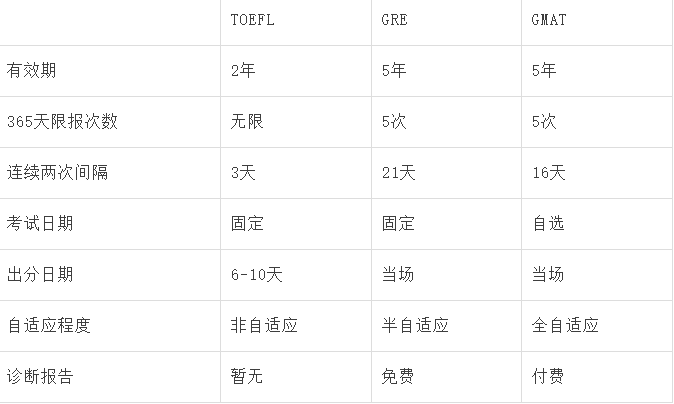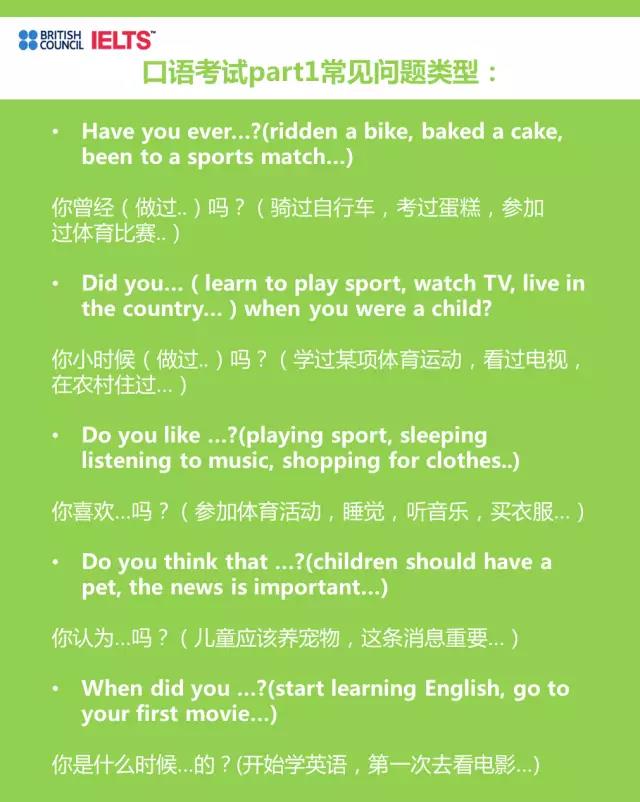新托福口語考試中的閱讀材料只是一個百十來字的段落,閱讀時我們不應把每個句子都孤立開來,而是要把所有的句子連成一個整體,今天小編給大家帶來了托福口語信號詞點明句間關系,希望能夠幫助到大家,一起來學習吧。
托福口語信號詞點明句間關系
Women could and did play a part in this process of settlement. Iceland, for instance, was uninhabited, and a permanent population could only be established if women also made the journey there. (后一句的具體事例為前一句提供說明與解釋)
People borrowed more and more money so that they could buy these shares. Because of this, the American people started to believe that share prices could only go up further. (“because of”明顯的因果關系)
Astronomy is a science that deals with all the celestial bodies in the universe. Astronomy includes the study of planets and their satellites, comets and meteors, stars and interstellar matter, star systems and clusters. (后一句是對前一句celestial bodies 的進一步解釋)
Previously it was believed that due to the Archaeopteryx’s (始祖鳥) underdeveloped anatomy, it would not have been able to fly. However, research by the London Natural History Museum into its brain developed and that it had good vision and a good sense of balance — all the requirements for a creature to be able to fly. (“However”轉折對比)
閱讀時,我們可以根據段落中出現的一些信號詞(Signal Words)來判斷句子與句子之間的關系,掌握段落發展線索,來調整閱讀速度,提高閱讀質量。
1.托福口語中,顯示相同信息的信號詞
There has been an upsurge of interest in chamber music. Likewise opera is receiving a boost from increased record sales.
“likewise”這一信號詞顯示了前面所提到的idea后面還要再一次出現。因此,閱讀時見到這樣的信號詞無須放慢閱讀速度。這樣的信號詞還包括:
and, furthermore, more, than, that, also, likewise, moreover, in addition, what is more, for instance, for example
2.托福口語中,顯示思路轉折的信號詞
I’d like to go but I’m too busy.
“but”前后是完全不同的信息描述,它向讀者顯示了作者的思路在這里有了轉折。閱讀時,碰到這樣的信號詞我們需放慢閱讀速度,以準確獲取作者真正想要說明的意思。這類信號詞還有:
although, however, on the contrary, but, in spite of, otherwise, despite, nevertheless, yet
3.托福口語中,顯示因果關系的信號詞
As a result of the pilots’ strike, all flights have had to be cancelled.
All flights have had to be cancelled as a result of the pilots’ strike.
所有航班被取消的原因是因為飛行員們的罷工;飛行員們的罷工導致了所有的航班不得不被取消。顯示因果關系的信號詞還有:
for, thus, because, for this reason, so, therefore, as, since, consequently
4.托福口語中,顯示順序的信號詞:
Internet speeds communication between companies, among co-workers through video-conferences, and among other individuals. First, media companies use the Internet for online news, or to broadcast audio and video, including live radio and television programs, while individuals use the Internet for communication, entertainment, finding information, buying and selling goods and services. Second, the notion of distance disappears thanks to the Internet. People also enjoy instant messaging to exchange text messages or pictures in real time, with real-time video and sound. Finally, scientists and scholars use the Internet to perform research, distribute lecture notes or course materials to students, they communicate with colleagues, and can also publish papers and articles.
抓住了這樣的信號詞就把握住了作者敘述的順序,也就分清了相對獨立的論據。這樣的信號詞包括:
first, second, third, and so on, then, after, before, next, last, afterward, finally
5.托福口語中,表示結論/總結的信號詞
In conclusion, I would like to say how much I have enjoyed myself today.
詞組“in conclusion”前面所提到的一些信息將在這里被歸納總結。讀到帶有這樣的信號詞或短語的句子時,應格外留心注意,它們往往會向我們提示相關段落的核心信息。表示結論或總結的信號詞和短語還有:
as a result, finally, therefore, accordingly, in short, thus, consequently, in conclusion, so, in brief, in a word
托福口語:數詞句型積累
數詞句型:
21. It takes me three clear / cleanly days. 它花了我整整三天時間。
22. There are fifty and odd (or and more) students in our class. 我們班有五十余人。
23. The total expense amount to a hundred dollars. 全部費用合計100 美元。
24. We were fifteen, all told. 我們一共十五人。
25. The delegation consisted of 15, inclusive of (including) two interpreters. 代表團共十五人,包括兩名翻譯在內。
26. There were fifty people present, not counting (excluding) the children. 出席者達五十人, 兒童未計算在內。
27. We take a rest at intervals of two hours. 我們每隔兩小時休息一次。
28. I ask you to teach me every other day. 我請你每隔一天來教我。
29. Beijing is ten times as big as my home town. 北京有我的家鄉十個那么大。
30. The sun is a huge blazing ball, a million times larger than the earth. 太陽是個龐大的熾燃火球,比地球大一百多萬倍。
31. By comparison with 1992, the foreign trade turnover of that country in 2003 increased (to) 3.5 times. 與1992年相比,這個國家2003年對外貿易總額增加了2.5 倍(增加到3.5 倍)。
32. That table measures three feet by three. 那張桌子三英尺長,三英尺寬。
33. He valued the house for me at ?,500. 這房子他替我作價為三千五百鎊。
34. His coat is rated at 20 yuan. 他的大衣值價二十元。
35. The job was finished at a sitting (a stretch). 這工作一下子(一口氣)就做完了。
托福口語如何答題
新托福在近年來了一次大變臉,取消了語法部分,增加了口語測試。其中口試部分,共六道題目,每題4分,難度較大。特別是后四道題,融讀、聽、說于一體。其中第三題提供一篇百詞左右的閱讀材料,考生需在45秒內讀完,然后再聽一段長達1~2分鐘的對話,30秒后,給考生1分鐘時間陳述兩段材料和對話。
“這個難度很大,很多考生栽在口試上。”專家稱,以口試第三題為例,考生需經歷讀、聽、思、說四個步驟。時間只有15秒、30秒,稍一“打野”,就一抹黑了。
在口語測試中,考生不必陳述自己的觀點,而是用聽讀材料中的具體信息作答。這其實就是在考查學生是否具備了對先前讀到、聽到的材料進行快速歸納、總結、融合,然后再用口語復述的能力。很多考生反映,最不適應的題型就是口語先聽后說部分。這“最不適應”反映出了考生對新托福的新題型產生了嚴重的“水土不服”。
新托福與舊托福相比較,增加了口語和綜合能力測試,對閱讀和寫作占優勢的多數考生來說,新托福“放倒”一批考生也在情理之中。
考生在強化口語表達能力的同時,切不可忽略了閱讀和聽力。專家建議,平時在上課時,可嘗試用英語做筆記,鍛煉漢語轉換成英語的反饋能力。
“很多考生在口語測試中,容易犯‘鵝、鵝、鵝’的笑話,即不時卡殼。”老師們說,在新托福的口試中,考生要謹記放慢語速,如果用很快的語速作答,稍有停頓,考官會誤認為你是由于詞匯量不夠而卡殼。對此,專家建議,平時最好有意識地鍛煉自己的詞語運用能力,如和同學一起做“句子接龍”游戲,以某句話為故事開端,每個人順勢接一個英語句子,情節足夠豐富后,即成一個有趣的故事。
此外,新托福會經常出現一些專用詞匯,如醫學類、生物類等。學生平時記單詞時要留意生僻的專用詞匯,即使不會拼寫,也要做到“眼熟”、“耳熟”,不要讓這些生澀的詞匯影響了在口語考試里的表現。
托福口語相關文章:
★ 英語口語3000句第一課(1-94)
★ 學習資料庫
★ 英語口語
★ 托福改革后首考落幕 新增“托福移動考點”
★ 學習資料庫
★ 學習資料庫
下一篇:托福口語TASK3最強答題攻略





